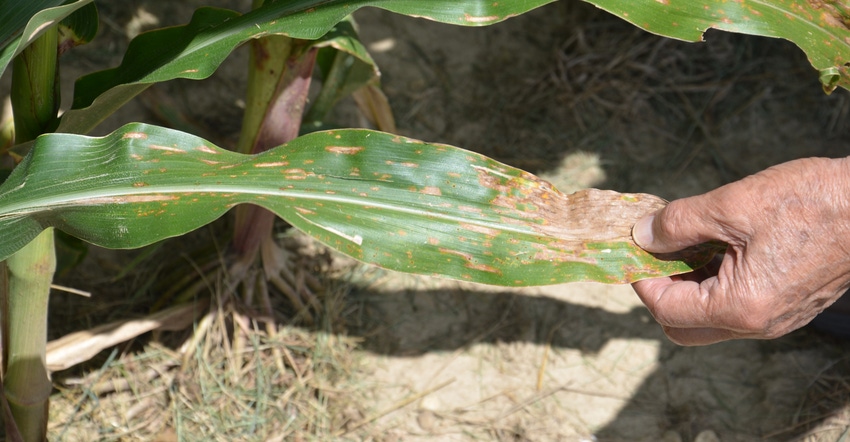May 28, 2018

Do you need foliar fungicides this year? If so, what’s the best time for application? This year it will be important to consider applying foliar fungicides because a lot of the corn crop was planted later than normal. However, the disease organisms were already “planted” in the soil from previous seasons and growing. Leaf diseases are going to have an edge in attacking crops, and you must be ready to protect them.
So when is the best time to apply fungicides?
Disease organisms become more prevalent in certain growing conditions. Northern corn leaf blight likes cool and wet conditions, like we had in early spring this year. Gray leaf spot likes high humidity and high temperatures. Conservation tillage has also increased the incidence of many diseases.
Hybrid differences
Some popular corn hybrids on the market have very high yield potential but are very susceptible to certain diseases. These susceptible but otherwise high-yielding hybrids help create more disease inoculum for the following year since they are grown on many acres. Last year we had an abundance of both northern corn leaf blight and gray leaf spot pathogens. You need to scout fields regularly to decide if and when foliar fungicides should be sprayed this year.
Planting date and relative maturity of hybrids can affect development of certain diseases. Earlier-maturity hybrids can sometimes escape disease. In scouting during the last couple of years, I have noticed kernels on ears that were almost dented, and gray leaf spot was still below the ears. An experiment last year confirmed that the biggest and most important leaf of the corn plant is the ear leaf. It is the leaf on the node where the top ear develops. The ear leaf is critical because of its size and proximity to the ear, which helps grain fill. You need to protect the ear leaf and the leaves above it because most of the yield is contributed by those leaves.
Fungicide decisions
Tests conducted by universities indicate that it’s not cost-effective to apply fungicides without the presence of disease. My scouting experience over several years has shown that you don’t have to apply fungicides to all hybrids or even all fields planted on different dates because some fields might escape disease.
Based on recent information and experience, the ideal time to apply fungicides on corn is before the ear leaf is affected by the pathogens. The second-best time is after all pollen shed is complete and silks start to turn brown. You want to protect the leaves during the grain-fill period. Spraying fungicides before the completion of pollination can adversely affect kernel development and yield, in some cases. Refer to product labels before applying.
Whatever method of foliar application you use, disease lesions must be covered with fungicides in order to kill them or at least slow their growth.
Nanda is president of Agronomic Crops Consultants LLC. Email him at [email protected] or call 317-910-9876.
About the Author(s)
You May Also Like






